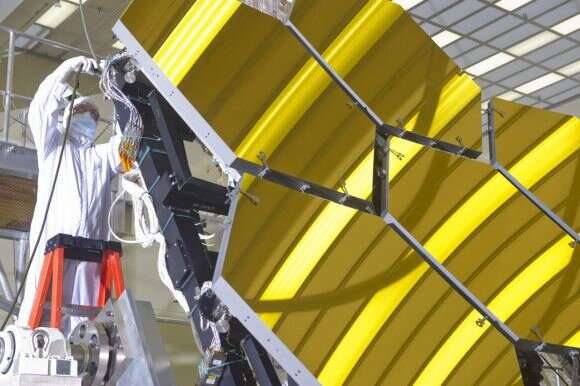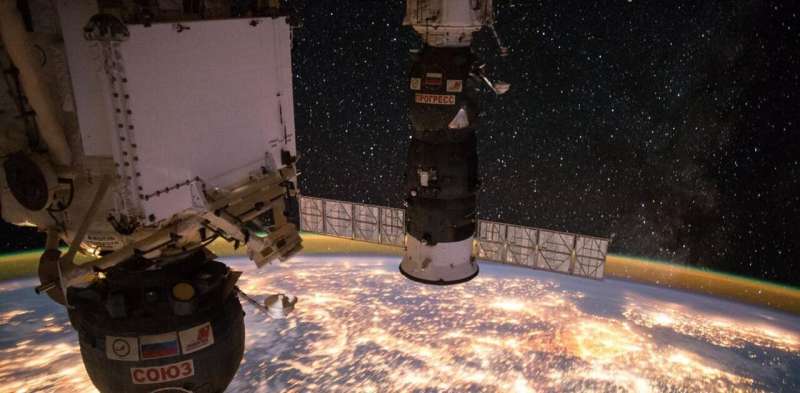
Copernical Team
Testing rocks on Earth to help NASA's Perseverance work on Mars
 When NASA's Perseverance Mars rover tried to collect its first rock core sample last August, the outcome presented a puzzle for the mission team: The rover's sample tube came up empty. But why?
Not long after, Perseverance successfully gathered a sample the size of a piece of chalk from a different rock. The team concluded that the first rock they had chosen was so crumbly that the rover's
When NASA's Perseverance Mars rover tried to collect its first rock core sample last August, the outcome presented a puzzle for the mission team: The rover's sample tube came up empty. But why?
Not long after, Perseverance successfully gathered a sample the size of a piece of chalk from a different rock. The team concluded that the first rock they had chosen was so crumbly that the rover's Sols 3388-3390: Pediment Passage
 Curiosity is advancing westward through a largely boulder-strewn channel that is leading us toward the Greenheugh Pediment. The Pediment is where our rover will spend the next many months, as we turn back uphill to the south and continue our ascent up Mt. Sharp. Despite it being quite craggy in our current location, we did have to drive over a large sand patch to get to our current parking locat
Curiosity is advancing westward through a largely boulder-strewn channel that is leading us toward the Greenheugh Pediment. The Pediment is where our rover will spend the next many months, as we turn back uphill to the south and continue our ascent up Mt. Sharp. Despite it being quite craggy in our current location, we did have to drive over a large sand patch to get to our current parking locat Vaya Space completes first suborbital test flight
 Vaya Space announced the successful launch of its hybrid rocket from Mojave, California on January 29th, 2022 operating under an existing FAA waiver. The suborbital flight demonstrated its hybrid rocket design using 3D printed fuel grains created from recycled thermoplastics. This launch paves the way for rapid acceleration of Vaya Space's go-to-market strategy as the Company scales for producti
Vaya Space announced the successful launch of its hybrid rocket from Mojave, California on January 29th, 2022 operating under an existing FAA waiver. The suborbital flight demonstrated its hybrid rocket design using 3D printed fuel grains created from recycled thermoplastics. This launch paves the way for rapid acceleration of Vaya Space's go-to-market strategy as the Company scales for producti Digi-Key to distribute EPC Space Rad Hard devices worldwide for space applications
 EPC Space has announced that Digi-Key Electronics will be a global distributor for EPC Space's line of radiation hardened (rad hard) GaN-on-silicon transistors and ICs, packaged, tested, and qualified for satellite and high-reliability applications.
Spanning a range of 40 V to 300 V, EPC Space offers a family of rad hard enhancement mode power transistors. These power transistors demonstra
EPC Space has announced that Digi-Key Electronics will be a global distributor for EPC Space's line of radiation hardened (rad hard) GaN-on-silicon transistors and ICs, packaged, tested, and qualified for satellite and high-reliability applications.
Spanning a range of 40 V to 300 V, EPC Space offers a family of rad hard enhancement mode power transistors. These power transistors demonstra Aerojet Rocketdyne positioned to continue driving growth, profitability and value creation
 Aerojet Rocketdyne Holdings, Inc. has reaffirmed its strong foundation for substantial value creation following the termination of its merger agreement with Lockheed Martin Corporation. The Company issued the following statement:
We are poised to deliver substantial value to our shareholders driven by our continued leadership in key space exploration and defense growth markets, including b
Aerojet Rocketdyne Holdings, Inc. has reaffirmed its strong foundation for substantial value creation following the termination of its merger agreement with Lockheed Martin Corporation. The Company issued the following statement:
We are poised to deliver substantial value to our shareholders driven by our continued leadership in key space exploration and defense growth markets, including b How to design a sail that won't tear or melt on an interstellar voyage
 Astronomers have been waiting decades for the launch of the James Webb Space Telescope, which promises to peer farther into space than ever before. But if humans want to actually reach our nearest stellar neighbor, they will need to wait quite a bit longer: a probe sent to Alpha Centauri with a rocket would need roughly 80,000 years to make the trip.
Igor Bargatin, Associate Professor in t
Astronomers have been waiting decades for the launch of the James Webb Space Telescope, which promises to peer farther into space than ever before. But if humans want to actually reach our nearest stellar neighbor, they will need to wait quite a bit longer: a probe sent to Alpha Centauri with a rocket would need roughly 80,000 years to make the trip.
Igor Bargatin, Associate Professor in t James Webb telescope going through cooling process

Cooling things down in space is trickier than it might sound. But that is exactly the process the James Webb telescope is going through right now. Getting down to cryogenic temperature is imperative for its infrared imaging systems to work correctly. While the telescope has already started, it will be another few weeks before the process is complete and it's ready to start capturing its first groundbreaking infrared images of the universe.
That might seem like an exceptionally long time to cool something down, but it's all part of the difficulty of doing so in space. The first tricky point is getting out of the sun, which can heat equipment up to blistering temperatures if it is exposed to direct sunlight. Luckily, James Webb has a specially designed sun shield to keep it out of direct sunlight.
The rest of the telescope's instruments have been cooling since the sunshield was deployed several weeks ago.
Fresh from the ISS: How high school students are leading an experiment on space-made yogurt

It's probably no surprise that keeping healthy in space is incredibly important. And without the typical resources found on Earth, creative solutions have to be explored.
Right now, some excited Year 10 and 11 students from around Victoria are waiting with anticipation as their space-made yogurt—fresh off the International Space Station (ISS)—heads back to Australia from NASA facilities in the United States.
The students worked with researchers at the Swinburne University of Technology to design an experiment investigating the nutritional values of space-made yogurt. The results could provide insight into how to best help astronauts with vital nutrition during long-haul spaceflight.
The human gut
A critical factor in human health is the overall health of our gut microbiome, which is estimated to host more than 100 trillion bacteria.
Maintaining the health and diversity of these bacteria might be even more important in space than on Earth. In 2019, NASA released groundbreaking results from a year-long study on astronaut twins Mark and Scott Kelly.
In 2016, Scott spent 365 days on the ISS, experiencing reduced gravity, while Mark remained on Earth.
Decisions from the 2022 Space Summit
Press Release N° 4–2022
European leaders today confirmed their ambitious plans to work closely together to accelerate Europe as a world leader in space during a series of high-level meetings held in Toulouse, France.
Exploring new worlds
 Video:
00:02:19
Video:
00:02:19
As part of Agenda 2025, ESA will take preparatory steps towards a sample return mission from the moons of giant planets, and will foster innovation by challenging commercial companies to develop a next generation of competitively priced European space transportation systems.
Space science and planetary exploration have a unique inspirational power for engaging young generations in science, technology, engineering and maths, creating a highly educated workforce for the future.
Collaborating with the European space industry to foster innovation generates economic growth and new revenues, as well as creating new jobs for European citizens. All the money invested in space
